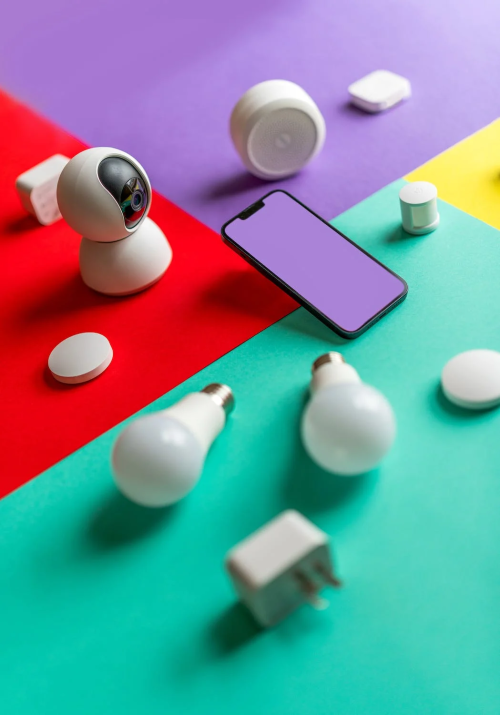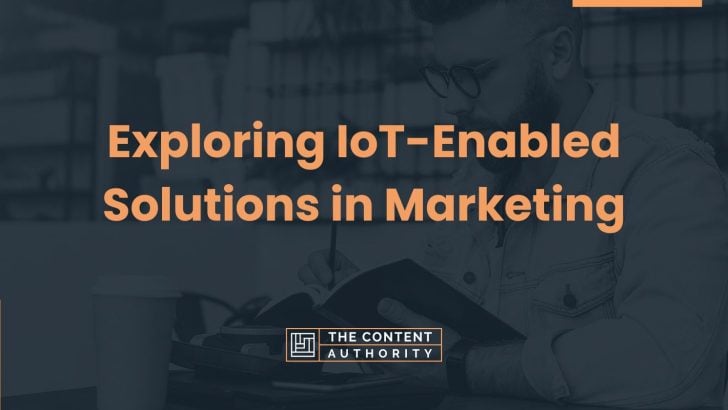The Internet of Things (IoT) refers to a network of physical objects that come embedded with software, sensors, and other technologies enabling them to communicate via the Internet. Recently, experts have used the term ‘IoT’ to describe items that can talk to each other.
Today, IoT is everywhere you look – from the QR codes you see in commercial adverts to the smart devices helping run homes. But the reality is that there’s still a lot of untouched terrain, especially when it comes to the Internet of Things in marketing.
IoT in Marketing
As the world ushers in a new era in digital marketing, you can’t help but marvel at the expanding field that is IoT-marketing. It’s an area that is increasingly proving transformative and whose impact on modern marketing practices is just starting to be felt.
Marketers now have unprecedented opportunities to engage with their customers in a manner that’s more impactful and personalized. In marketing, the essence of IoT lies in its ability to collect real-time data from a variety of devices, e.g., wearables, smartphones, and sensors.
Together, they provide a goldmine of preference insights and consumer behavior. Marketers can use the information collected from industrial equipment, vehicles, and home appliances to create targeted campaigns capable of resonating with their audiences.

The Impact of IoT in Marketing
The use of the Internet of Things in advertising involves much more than the smart devices in use: it’s also about the relationship-building abilities unlocked by these gadgets. The gadgets make it possible to create deeper connections between brands and their customers.
Consumer Data and The IoT Ecosystem
At the core of its influence on marketing is consumer data. The broad network of interlinked gadgets provides marketers with an unprecedented stream of customer information. With it, they’re able to gain a deeper understanding of consumer behavior and preferences.
When you look at the relationship between the Internet of Things and marketing, you’ll realize that this consumer data can assist in driving personalized marketing campaigns. These are campaigns that can resonate with consumers on a new level.
For example, look at the following:
- Connected vehicles provide automobile companies with real-time information related to individual driving habits. Marketers can use this data to create insurance offers and personalized service reminders.
- Wearable technology offers access to individual health and activity data. A marketer working for a fitness brand can use this information to leverage a targeted promotion.
- Smart home appliances track usage patterns that allow marketing companies to make tailor-made advertising campaigns that sell.
The Personalization Revolution
IoT has become adept at providing personalization at scale, thus helping to revolutionize marketing strategies. Consumers have long expected brands to predict and understand their needs using available data.
Deploying IoT in the field of marketing allows marketers to create personalized experiences capable of increasing brand loyalty. In the last few years, personalization and customization have taken root in marketing in the following ways:
- Smartphone location data makes it possible to run location-based promotions. Brands can use this data to provide specialized discounts whenever a customer nears a given retail store.
- IoT gadgets can detect whenever a certain item is about to run out of its life cycle, prompting the concerned parties to run a well-timed replacement promotion.
Real-Time Consumer Engagement
IoT devices enable real-time engagement between brands, marketers, and consumers. Considering that smart gadgets can communicate with one another, savvy marketers can take advantage of this feature to deliver timely messages.
Such messages, if well-crafted, can be more relevant than they ever were. For example:
- A smart thermostat adjusting its settings to match user preferences can activate promotional messages linked to energy-saving products.
- A refrigerator programmed by an IoT development company to track milk consumption in a home can deliver coupons and discount codes for a refill as the available supply runs low.
Internet of Things and Marketing – Challenges and Considerations
Although IoT presents valuable marketing opportunities, marketers must also be aware of its challenges.
Security and privacy concerns are at the forefront of IoT marketing, as responsible handling of consumer data is paramount. Marketers need to ensure secure storage of data collected from IoT gadgets to prevent data breaches.
Other challenges and considerations include:
- Compliance with different regulations such as CCPA and GDPR
- Transparency in how brands use customer data
Applications of IoT in Marketing
Marketers are using the Internet of Things in marketing in different ways. Examples of these include:
- Geofencing for Real-Time Customer Targeting: Almost everyone can access a smartphone today. Considering that IoT market experimentation revolves around broad reach and popularity, marketers can use geofencing to detect when prospective clients are near a particular spot. From this, they can then send them personalized messages about a promotion.
- Weather-Dependent IoT Ad Displays: Since their launch, weather-dependent ads have relied on upcoming forecasts and prevailing weather conditions present in a specific area to deliver accurate and location-specific adverts. This means they can use a customer’s real-time location data to create contextualized advertisements.
- Multiple Brands Combining Forces: With IoT marketing campaigns, many brands are choosing to work together with the hope of reaching a broader consumer base. For example, Spotify and Uber worked on an ad campaign that enabled their clients to use an Uber app to connect to Spotify. This means a consumer could use the app to access their playlist and play it via the vehicle’s speakers.
These three examples help to highlight just how much marketing has become increasingly data-driven. And with IoT becoming a common feature in consumers’ day-to-day lives, the connected customer has become an excellent source of marketing information.
Conclusion
The Internet of Things is a powerful technology with promising capabilities. Savvy marketers can take advantage of its many benefits to collect and analyze data pertaining to consumer needs, preferences, and buying behavior.
The data they collect will enable them to create more relevant, personalized, and engaging campaigns. Its correct utilization can help bridge the gap between the online and offline worlds, thereby allowing marketers to deliver a seamless consumer experience.
Shawn Manaher is the founder and CEO of The Content Authority. He’s one part content manager, one part writing ninja organizer, and two parts leader of top content creators. You don’t even want to know what he calls pancakes.

